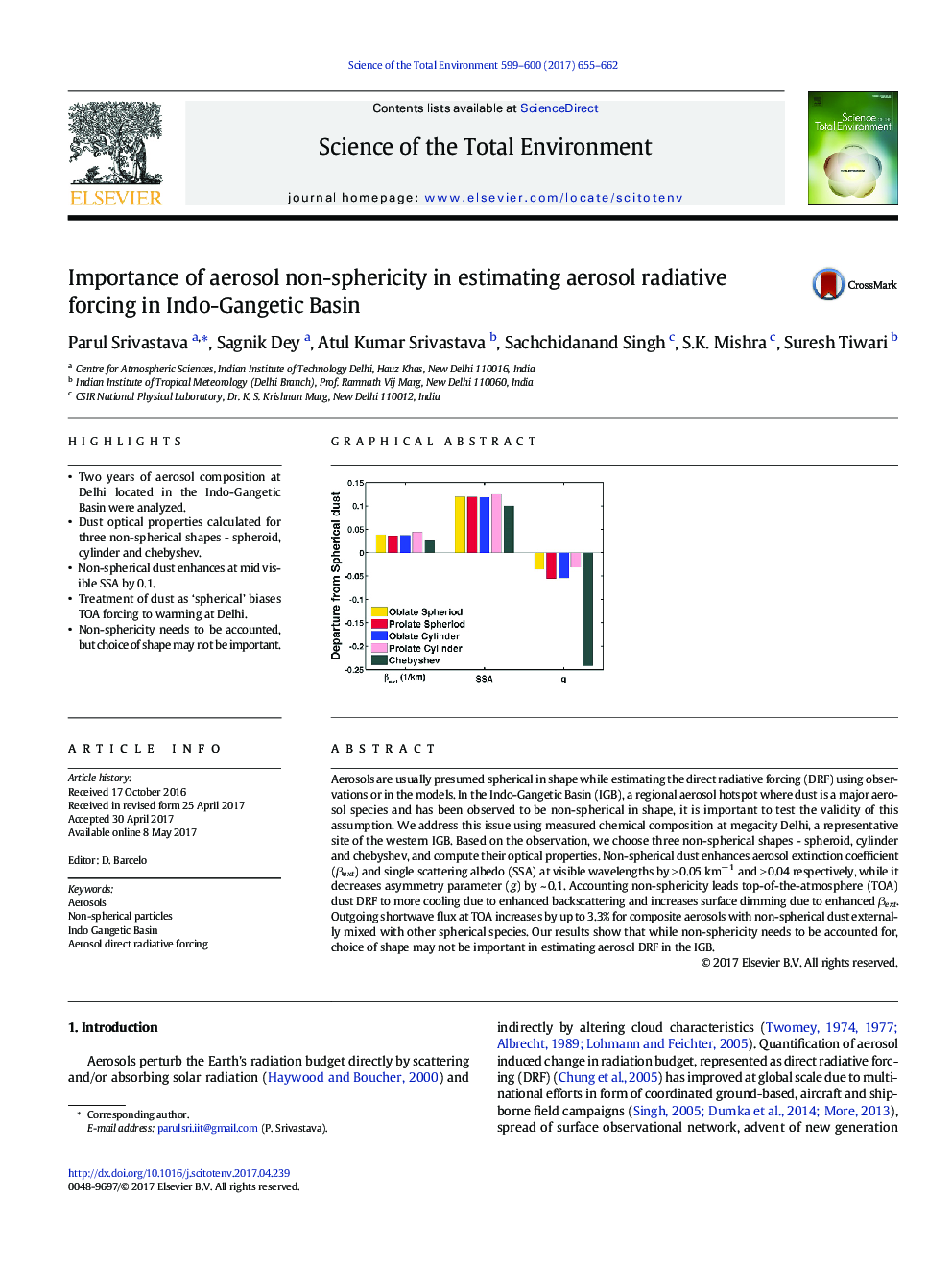| کد مقاله | کد نشریه | سال انتشار | مقاله انگلیسی | نسخه تمام متن |
|---|---|---|---|---|
| 5750529 | 1619698 | 2017 | 8 صفحه PDF | دانلود رایگان |

- Two years of aerosol composition at Delhi located in the Indo-Gangetic Basin were analyzed.
- Dust optical properties calculated for three non-spherical shapes - spheroid, cylinder and chebyshev.
- Non-spherical dust enhances at mid visible SSA by 0.1.
- Treatment of dust as 'spherical' biases TOA forcing to warming at Delhi.
- Non-sphericity needs to be accounted, but choice of shape may not be important.
Aerosols are usually presumed spherical in shape while estimating the direct radiative forcing (DRF) using observations or in the models. In the Indo-Gangetic Basin (IGB), a regional aerosol hotspot where dust is a major aerosol species and has been observed to be non-spherical in shape, it is important to test the validity of this assumption. We address this issue using measured chemical composition at megacity Delhi, a representative site of the western IGB. Based on the observation, we choose three non-spherical shapes - spheroid, cylinder and chebyshev, and compute their optical properties. Non-spherical dust enhances aerosol extinction coefficient (βext) and single scattering albedo (SSA) at visible wavelengths by > 0.05 kmâ 1 and > 0.04 respectively, while it decreases asymmetry parameter (g) by ~ 0.1. Accounting non-sphericity leads top-of-the-atmosphere (TOA) dust DRF to more cooling due to enhanced backscattering and increases surface dimming due to enhanced βext. Outgoing shortwave flux at TOA increases by up to 3.3% for composite aerosols with non-spherical dust externally mixed with other spherical species. Our results show that while non-sphericity needs to be accounted for, choice of shape may not be important in estimating aerosol DRF in the IGB.
117
Journal: Science of The Total Environment - Volumes 599â600, 1 December 2017, Pages 655-662